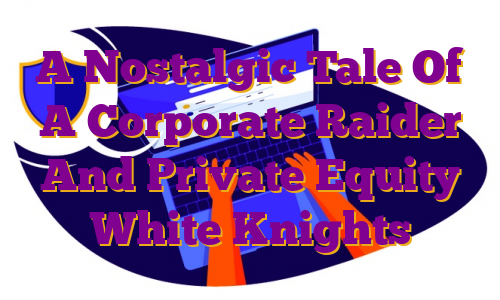In the last several weeks, most of the attention in the corporate governance world has been focused on the drama playing out between Elon Musk and Twitter’s board of directors—especially the Twitter board’s decision to install a “poison pill” to prevent Musk from attempting a hostile takeover.
Poison pills evoke a bygone era of corporate raiders when activist investors got saddled with the reputation that they have today in some quarters, even though their business model has changed dramatically. Rather than being Viking-like corporate raiders (my wife and I are currently watching “The Last Kingdom” about King Alfred in the late 9th century so this metaphor comes readily to mind), most activist investors now function as an important mechanism for ensuring corporate accountability on both financial and sustainability performance.
This admittedly somewhat unhealthy feeling of nostalgia was reinforced by another corporate governance drama unfolding in recent weeks. This one is getting less attention than Musk’s antics, but is much more interesting. A tiny hedge fund is attempting to squeeze a huge amount of old-fashioned “greenmail” out of Nielsen, the storied audience and media-ratings company. It is pitting itself against well-established active investors who, continuing with the language of a bygone era, are, ironically, in the role of the “white knight.” Here we have another example of how the stereotype of activist investors doesn’t always match the current reality of what they do, as I have written about before.
Knight with white horse wolking in the forest
getty
On March 29, Nielsen announced that it would be acquired by a consortium led by Evergreen Coast Capital Management, an affiliate of Elliott Investment Management, and the private equity and alternatives firm Brookfield for $28 per share. Nielsen’s rationale for going private was to enable the company to transform its business model in the rapidly digitizing media industry away from the pressures and the glare of quarterly earnings.
Approximately one week later, The WindAcre Partnership, a Houston-based hedge fund, disclosed that it owned a 9.6% stake in Nielsen and that it planned to acquire more stock in an attempt to block the take-private transaction. It has since been acquiring stock at a breathtaking pace, recently blowing through 27% ownership in the company.
Timeline of The WindAcre Partnership SEC Filings
Self
On the surface, this behavior seems puzzling for a three reasons.
First, in terms of a premium, $28 per share (for a total equity value of roughly $10 billion) represents a 60% uplift in value from roughly $17.50, Nielsen’s unaffected share price prior to news reports that it was in buyout talks. Before that, Nielsen’s stock had been trending steadily downward for a year; it had briefly touched $28 only once in the past four years.
NLSN Share Price – 5 Year
Self
Second, WindAcre is a small, eight-person fund run by Snehal Amin, a former executive at TCI (background here). According to its Form ADV (a filing with the SEC that discloses an investment firm’s basic ownership and business-marketing materials), WindAcre has only around $7 billion in assets under management, and its position in Nielsen is now worth at least $2.5 billion, or more than a third of its assets. Clearly, Windacre is making a hugely concentrated bet on Nielsen at a price near the stock’s four-year high with the intent of blocking the current $28-per-share deal and potentially sending the stock back down to $17.50. Since I am not a cool hedge fund guy (although I like to wear jeans to business meetings), I must admit that the economic logic of what WindAcre purports to want here eludes me.
Third, Nielsen is incorporated in the U.K., meaning there are two well-established paths open for the consortium to gain control of the company. The first path is to pursue what is called a “scheme of arrangement” which requires 75 percent of shareholders to vote in favor of the scheme. This is the path that WindAcre is clearly seeking to block. But under U.K. rules, it is customary for the the consortium to have a second path available to them. They can easily switch to a tender offer, which only 50.1 percent of Nielsen shareholders would need to accept in order for the offer to succeed. In this scenario, assuming that most of Nielsen’s other shareholders would opt for the 60 percent premium (and news reports suggest that all but WindAcre are leaning in this direction), WindAcre would be stuck owning a large, illiquid position in a controlled company (which, returning to its Form ADV, seems inconsistent with how the fund is marketed to its investors).
Something doesn’t add up. So what is really going on here? Spoiler alert: WindAcre is not interested in improving the company or delivering value to its shareholders. Rather, it is looking to brazenly line its own pockets to the detriment of everyone else.
Businessman putting money in his suit pocket isolated on white background
getty
This becomes clear by rewinding the tape to a week before the takeover was announced. On March 20, Nielsen’s board put out a press release rejecting a takeover proposal from the private equity consortium at $25.40 per share, arguing that the price was too low. The press release stated that “The Board reached this determination based on its comprehensive review of the proposal, with the assistance of its independent financial and legal advisors, and discussions with The WindAcre Partnership LLC (“WindAcre”) under a confidentiality agreement.” The press release also pointed to disclosures showing that, in addition to its 9.6% common-stock ownership, WindAcre had acquired “economic exposure to Nielsen through total return swaps with respect to approximately 51,914,900 shares, or 14.44% of Nielsen’s ordinary shares.”
In other words, WindAcre was representing to Nielsen’s board, and to the consortium, that it could easily obtain a ~25 percent position in the company and single-handedly block a scheme of arrangement. (For the avoidance of doubt, the newly proposed SEC rules requiring greater disclosure of cash-settled swaps, for which I submitted a comment letter to the Commission, would have had no material application here, as WindAcre had already disclosed its swaps position with the SEC.)
Nielsen’s press release pointed to something else unusual. WindAcre had spoken with the consortium about the possibility of joining it, the release said. This would typically involve WindAcre exchanging its present economic exposure for an equity stake of equal value in a newly private Nielsen. However, the press release stated that “Following these discussions, WindAcre informed Nielsen and the Consortium that it had determined not to join the Consortium and that it would oppose the transaction as it views Nielsen’s intrinsic value to be significantly higher than values proposed by the Consortium.”
On its face, this makes no sense. If WindAcre had been offered the possibility of rolling its existing stake into the deal, then Nielsen’s intrinsic value, relative to the transaction price, would be irrelevant because WindAcre would get to retain its stake in Nielsen (i.e., it would not be taking the transaction price) and would enjoy whatever increase in value occurred in a private setting. Regardless of this fact, and for reasons that seemed hard to comprehend at the time, WindAcre appeared to double down on a new, high-risk strategy.
Then an April 7 Bloomberg News report exposed a bombshell detail that clarified the true nature of WindAcre’s strategy:
“The shareholder opposing the takeover of Nielsen Holdings Plc offered to support the take-private deal if it was awarded roughly $1.1 billion in additional equity, according to people familiar with the matter. ….
During the takeover negotiations, WindAcre offered its support if the buyers granted it the equivalent of $40 for each of its 86.5 million shares and options in the form of equity in the closely held provider of media data services, the people said, asking not to be identified because the matter is private.
WindAcre’s stocks and options would have been valued at about $2.4 billion based on the $28 purchase price. With the sweetener it requested for itself, it wanted an additional $1.1 billion in equity in the newly privatized company, the people said. No other shareholders would have been eligible for the higher price.”
In other words, not content to simply roll its existing stake into the deal, WindAcre’s Amin had apparently threatened to block the transaction unless he was paid a sweetener of roughly $1.1 billion—a form of old-fashioned “greenmail,” with a twist.
In the 1980s, greenmail typically involved a threat to pursue a hostile takeover unless a special payoff was made, usually a buyout of the greenmailer’s shares at a premium. In this case, WindAcre is trying to block a consensual transaction, one that Nielsen’s other shareholders reportedly support, unless they gets a special equity grant equal to more than $1 billion of value—for free. Well, free for Amin, but that would mean a transfer of $1 billion in value from all the other shareholders to him—roughly 10 percent of the proposed purchase price!
Weapon wielding viking warriors in formation in front of viking hoard and mountain range
getty
And with this revelation, Amin’s end game is clear. He doesn’t want to actually block the transaction. Rather, he’s apparently still trying to use what leverage he can muster to get his billion-dollar payoff. For those of you, like me, who aren’t practitioners in this exciting world of activist investing, here’s an analogy: WindAcre is like the Viking Warlord who goes to a Saxon King and says, “If you welcome me and my warriors inside your castle walls, we can protect you from the other Vikings.” Another Viking clan appears outside the walls and says, “We’d like to provide you with the financial resources you need to grow your kingdom.” The WindAcre-like Warlord says, “Unless these other Vikings pay me $1 billion, I’ll burn your kingdom down.”
For context, the 60 percent premium Elliott and Brookfield are offering for Nielsen is more than double that of typical take-private premiums, which usually range from 20-30 percent, let alone for a deal that is among the largest in the M&A landscape this year. Fortunately for the other shareholders, who appear ready to accept the 60 percent premium, U.K. law offers an elegant solution to this sort of holdout problem, which is why one rarely sees holdout behavior in the U.K. (Note to self: This is something the SEC should consider.) Shareholders who want the cash can take the offer. Those who don’t can keep their shares. It’s very unlikely that this is what Amin actually wants—to have a third of his fund tied up in an illiquid, controlled company. But this increasingly looks like what he’s going to get.
Seeing concepts like poison pills and greenmail in the headlines of today’s corporate governance fights provides a nice “Back to the Future” moment. However, the oddity of WindAcre’s antics in the context of a consensual transaction between a company and a private equity consortium is a vivid illustration of how times have changed.
Activist investors and private equity firms have an important role to play in long-term value creation. The balance of power that has evolved between shareholders and corporations on both sides of the Atlantic—to deter bad hedge fund behavior without discouraging the kind of healthy activism that ensures corporate accountability—appears to be working. Musk’s Twitter antics have been put on hold for the moment. As for Amin, it looks like his efforts to block the Nielsen deal are a ratings dud.
.

![]()
 Dear Reader,
Dear Reader,



